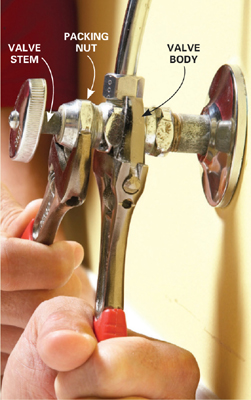
The valve in a freeze-proof faucet stops the water flow far inside the warm house. That prevents freezing and bursting pipes in the winter.
That dripping faucet isn’t just a water-wasting annoyance. The constant drip contributes to basement or crawl-space dampness, while moist soil attracts ant and termites. But stopping the drip is quick and easy. If you live in a warm climate, your faucet may not be a freeze-proof model like the one shown here, but the steps will be similar.

The valve in a freeze-proof faucet stops the water flow far inside the warm house. That prevents freezing and bursting pipes in the winter.
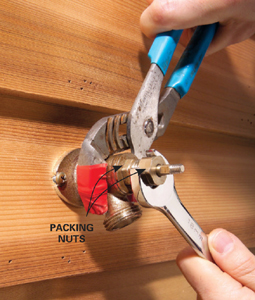
1. Dismantle the faucet
Remove the screw or nut in the center of the handle and pull the handle off (it may require a hard tug). Then unscrew the packing nut. Some models have two packing nuts. While you loosen the packing nut, hold the faucet steady; you don’t want to twist the whole faucet and loosen connections inside. Wrap pliers with tape to avoid marring the faucet.
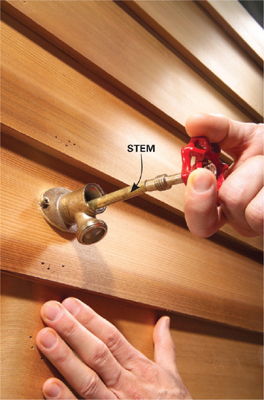
2. Remove the stem
Put the handle back on and turn it counterclockwise to remove the stem. Some stems don’t need to be turned but come straight out with a firm pull.
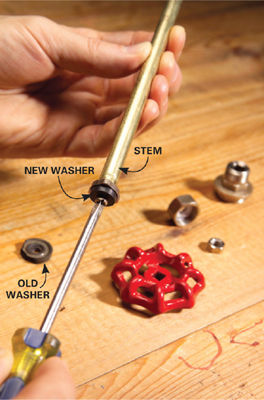
3. Replace the washer
Unscrew the rubber washer at the end of the stem. Take it to a home center to find a match. Then screw on the new washer and reassemble the faucet by reversing the previous steps.
Sometimes, the rubber washer that seals the valve simply wears out. But often, the washer is damaged by overtightening the handle. Here’s how: Even after the valve is completely closed, water continues to trickle out for a couple seconds while the long pipe inside the wall empties. That trickle makes you think that the valve is still open. So you crank the handle harder—and damage the washer. Get in the habit of closing the valve gently, and your washer will last much longer.
When you leave a garden hose connected to a faucet, it can keep the faucet filled with water, whether the valve is open or closed. Then, when the temperature drops, the faucet will freeze and burst. Don’t ask how I know this.

Gary Wentz, The Family Handyman Senior Editor
Voice of experience
When my new (and very attractive) neighbor complained that her outdoor faucet was leaking, I saw an opportunity to impress her and promised to have it fixed in 10 minutes. Trouble is, I forgot to turn off the water. A cold blast knocked me flat on my back in a mud puddle. My neighbor was less impressed than I had hoped.
Dave Welk, The Family Handyman Field Editor
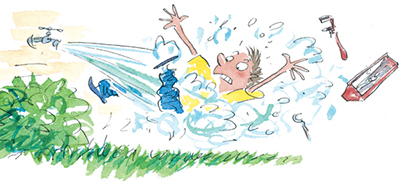
Aside from outdoor faucets, lots of other valves also have packing nuts: small shutoff valves under sinks (shown here), larger shutoff valves, even some old-style kitchen or bath faucets. All of these valves are prone to slow leaks around the valve stem. In most cases, you stop these leaks simply by tightening the packing nut slightly.
